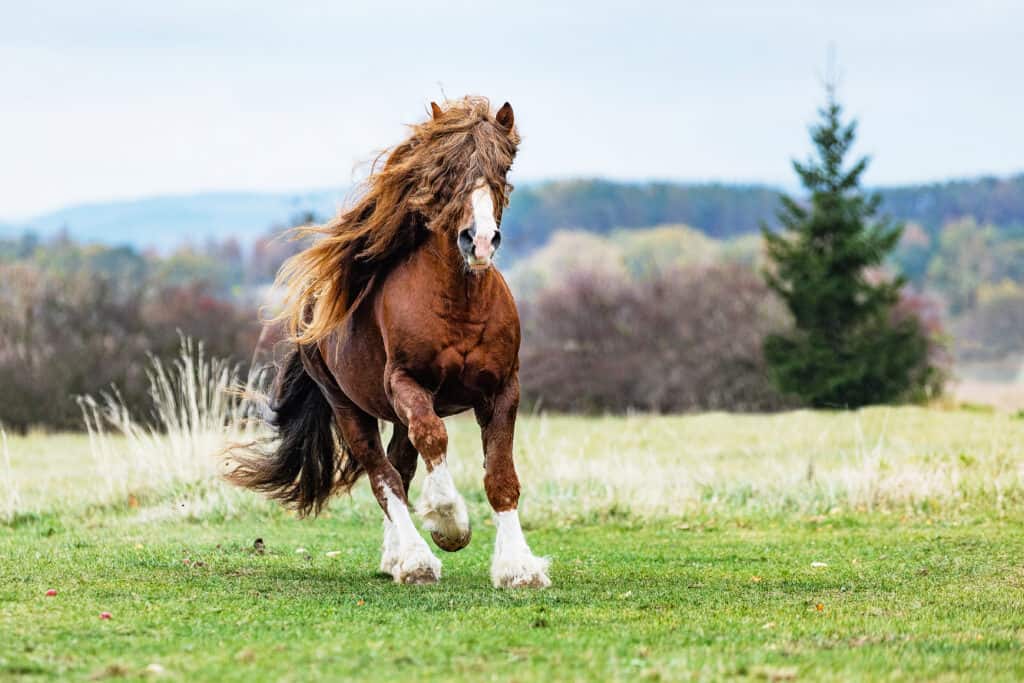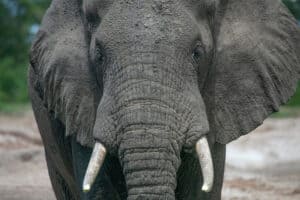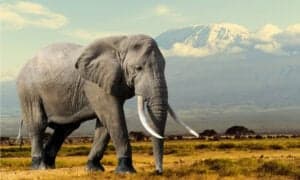As with all life forms, elephants have evolved over time from ungulates (properly so-called) to near ungulates or subungulates as they are called today. Their unusually shaped feet are quite similar to that of ungulates, hence the name. This is no surprise as fossil evidence suggests that there once existed a larger diversity of elephant species whose body structure puts them in the ungulate category.
Modern day elephants have, however, evolved with less similar ungulate traits. Here in this article are some more details about elephants, and most importantly, the answer to the question, are elephants ungulates?
What Is an Ungulate?
The term ungulate is used to classify mammals who have hoofed feet. A hoof is a strong, horn-shaped layer that covers the toes of animals in this category. It serves as a tough skin covering that protects the tissue and bones inside the feet of ungulates. It also provides support for their overall body weight while in motion. As you may already recall, horses, cattle, goats, oxen and rhinoceroses are hoofed animals; therefore they are ungulate species.
Ungulates are further sub-divided into Perissodactyla and Artiodactyla, which means odd-toed and even-toed ungulates respectively. Contrary to their names, Artiodactyla and Perissodactyla are not called odd or even-toed animals because of the number of toes they possess. Rather, odd-toed ungulates are known to rest all their body weight in three toes, or just the center toe. Even-toed ungulates on the other hand, rest their weight on their third and fourth toes. Hence the name odd-toed (rests on three or one toe) and even-toed (rests on two toes).
Examples of Perissodactyla include horses, donkeys, rhinoceroses, and zebras, while deer, camels, pigs, goats, sheep, giraffes, antelopes, and wildebeests are examples of Artiodactyla.
Despite their varying sizes and choice of habitats, ungulates share a number of characteristics. Excluding pigs and boars, they are herbivorous animals. As a result, you may find that they are largely ruminant animals who have adapted to plant-based diets. They are also prey animals. Their lack of interest in meat makes them susceptible to attacks from carnivores. Animals like boars and antelopes have horns and antlers to defend themselves, though. Rhinos also have their huge size in their favor.
In general, ungulates evolved with agile legs and feet for quick flights in the face of danger. This is evident in horses, antelopes, and deer. Altogether, they play a tangible role in our ecosystem; providing milk and meat and continuing seed dispersal.
You may be wondering how elephants fit into this family. Here’s how. Evolutionary transitions in extinct groups of ungulates suggest that elephants who belonged to the order Proboscidea had hoofed feet. That would qualify them as ungulates, correct? These species were called the African elephant and the Indian elephant. However, there exists some controversy amongst paleontologists about tangible links between fossil evidence of extinct species and modern day elephant species. This calls to question their status as true ungulates.
What Are Examples of Ungulates?

Horses are odd-toed ungulates.
©Nadezda Murmakova/Shutterstock.com
Until recently, ungulates were strictly classified as Perissodactyla and Artiodactyla. However, research and discovery of genetic connections between seemingly different and newly discovered species have opened the bracket. Examples of ungulates now include elk, reindeer, gazelle, pronghorn, newly found species of deer, bison and moose.
These new discoveries of ungulate mammals unfortunately do not translate to an increase in the population of these animals in general. Several ungulates are under threat of extinction due to hunting activities by humans.
The International Union for the Conservation of Nature has put up giraffes, mountain and malayan tapirs, water deer, Sumatran rhinoceros, and plain zebras, among others on its red list. This is not to say that conservation efforts have been in vain. However, the survival of these animals is critical for a continued balance in our ecosystem.
Why Are Elephants Not Ungulates?

Because elephants lack hooves, they are not considered ungulates.
©AndyElliott/Shutterstock.com
Elephants do not have hooves, therefore they do not fall under the broad class of odd or even-toed ungulates. And although they are herbivores, they still do not belong to the Ungulata family since they do not possess hoofed feet.
Ungulates are distinguished by the structure of their feet and how they walk. The hoof is made of an outer layer of keratin called unguis. On the other hand, elephants have five toes on each foot, although their toenails vary depending on the species.
Asian elephants have five toenails on their front feet and four toenails on their hind feet. Meanwhile, the African bush species have four toe nails on their front feet and three in the back. These nails are made of the same material as ungulate hooves (keratin). But instead of horn-shaped feet, elephants have wide stump-like feet with fat pads underneath.
When walking or standing, ungulates use their hooves to touch the ground. This means that the tissues and bones that make up their toes are covered by the outer covering. So in the course of movement and pauses, their toes are protected by the hooves. The strength of the hooves also provides support for body weight. Picture a rhinoceros who typically weighs over 4000 pounds putting all its weight on its toes. They must be pretty strong!
For elephants, movement is done with the tip of their toes. Not only does style of movement help to keep their toes trimmed, it puts their weight on the heels which are covered by a fat pad. The pad gives a cushion effect which keeps excess weight of the bones in readiness for long walks in search of food.
Are Elephants Digitigrade or Plantigrade?

Since elephants are accustomed to walking on their toes, they are digitigrades.
©JohnEGoodwin/Shutterstock.com
Animals that walk on land can also be classified according to how their feet work or how they move. There are three categories of such animals depending on how much contact their feet make with the ground when they move: Unguligrades, digitigrades, and plantigrades. Unguligrades like pigs, cows, and deer are animals that walk on their hooves, while digitigrades walk on their fingers or toes. Plantigrades place their entire foot on the ground when walking like human beings and bears do.
Of these three categories it is clear that elephants are digitigrades since they are accustomed to walking on their toes. This practice keeps their nails healthy and trimmed. In addition, cats and dogs are also examples of animals who walk on the tip of their toes while keeping their wrists elevated the entire time.
Up Next:
- What Do Elephants Eat? Their Diet Explained
- Do Elephants Have Toes? Understanding Elephants’ Feet
- Ellie’s Elephants: A Video on Asian Elephants!
- Are Elephants Aggressive?
The photo featured at the top of this post is © Volodymyr Burdiak/Shutterstock.com
Sources
- John R. Hutchinson, Cyrille Delmer, Charlotte E. Miller, Thomas Hildebrandt, Andrew A. Pitsillides, and Alan Boyde, Available here: https://www.science.org/doi/abs/10.1126/science.1211437
- Donald R. Prothero, Available here: https://link.springer.com/article/10.1007/s12052-009-0136-1
- Valerius Geist, Available here: https://www.cambridge.org/core/journals/quaternary-research/article/relation-of-social-evolution-and-dispersal-in-ungulates-during-the-pleistocene-with-emphasis-on-the-old-world-deer-and-the-genus-bison/08949C21232D996C65C11325C22B3AEC
Thank you for reading! Have some feedback for us? Contact the AZ Animals editorial team.






